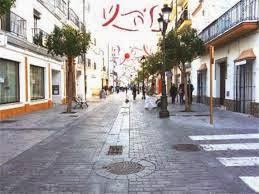Description of city of Chiclana
Founded in 1303 by Alfonso Pérez de Guzmán, this town
experienced great economic development in the 18th century, as the
intense merchant and trading activity caught on around the entire
Bay. Many manor houses, such as that of the Conde del Pinar, were
built around this time.
The wine industry, which traditionally supported the local economy
(with excellent wines which belong to the Jerez-Xeres-Sherry and
Manzanilla de Sanlúcar Designations of Origin), has slowly given way
to the tourist sector with the last few years seeing a spectacular
boom. This boom is a response to the municipality's many appealing
features - an enviable natural setting and magnificent beaches -
which have contributed to the burst of luxurious urban developments
which have appeared, such as the Novo de Sancti Petri, with its
marina and incredible golf courses.
The town is also at the vanguard of Health Tourism, with the
Fuente Amarga Spa (1803), now considered one of the main health
centres in Spain. As well as the usual types of treatment for pain,
rheumatic, respiratory or dermatological disorders,the spa has
amazing relaxing properties, and is a great beauty treatment. And
everything is totally natural, with the sulphurous waters which
characterise the centre.
From La Barrosa Beach, one can see the picturesque Island of
Sancti Petri, the only remaining part of the southern tip of Cadiz’s
largest island, where tradition cites as the location of the famous
temple of Hercules, erected for the Phoenician god Melkart, and
visited by, amongst others, Julius Caesar and Hannibal. There are
also the ruins of an old castle.
Museums
The the Marín Dolls Factory Museum was founded in
1928. It is the best known of Chiclana's craftwork.Its
internationally renown dolls are a typical symbol of Spanish tourism.
The Municipal Bull Fighting Museum , dedicated to
the romantic bullfighters from Chiclana of the 19th century and
especially to Francisco Montes Paquiro.
The Museum of Chiclana, "Casa Briones",
Plaza Mayor, 7. It comprises different topics related to the town
history, territory, historical monuments...

Beaches
Chiclana has beaches to suit every taste, from the typical family
beaches like La Barrosa with its wide promenade and full
range of
services to other quieter ones in closer contact with nature: El
Puerco, sheltered by small cliffs and
Punta de Piedra.
Sancti-Petri Beach is ideal for windsurfing.
Night life is guaranteed in both the town and the urban
developments near the beach thanks to the high number of places on
offer, as well as the restaurants and beach bars.
The beaches of Chiclana "La Barrosa" and "Sancti
Petri", only 7 km away from the town centre they are an
important tourist and natural resort.
From both beaches, you can see the Island and Castle of Sancti
Petri. It is here, according to legend,where a phoenician temple
dedicated to Hercules-Melkart was built.

A legacy of monuments
Well worth a visit are the Neoclassical Parish Church of San Juan
Bautista, the Church of Jesús Nazareno, the Church of San Telmo and
the Hermitage of Santa Ana. The 18th century Torre del Reloj (The
Clock Tower) is also of great interest.


















